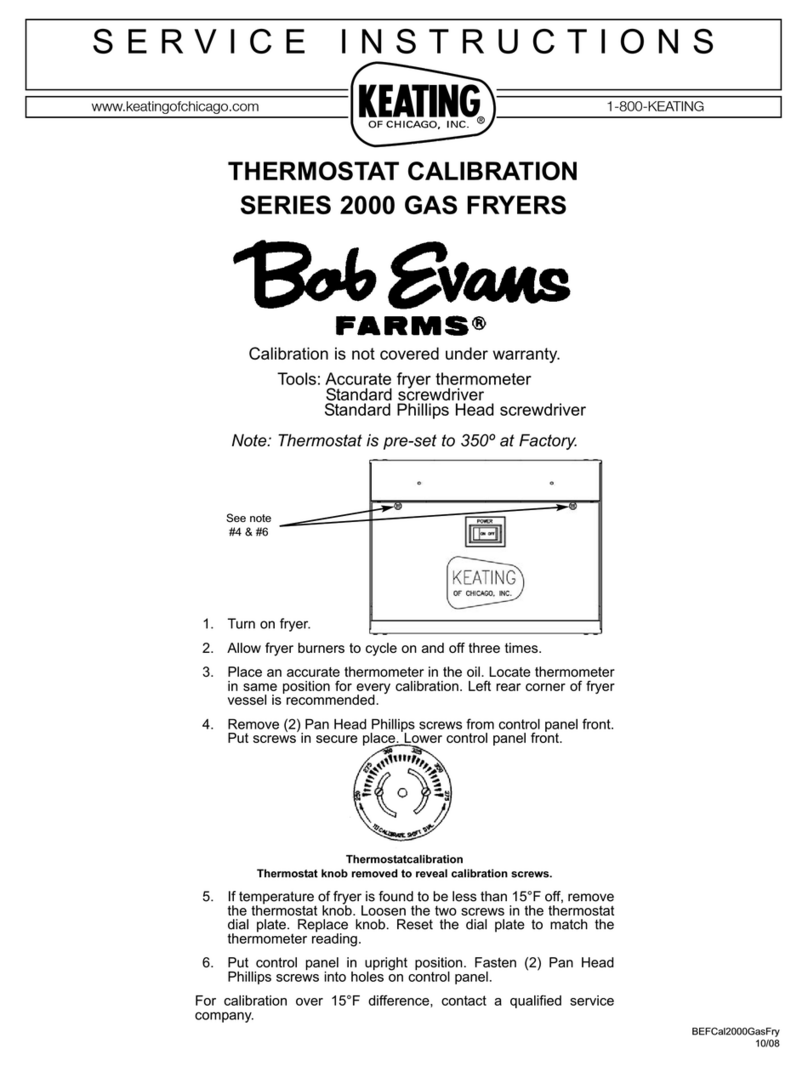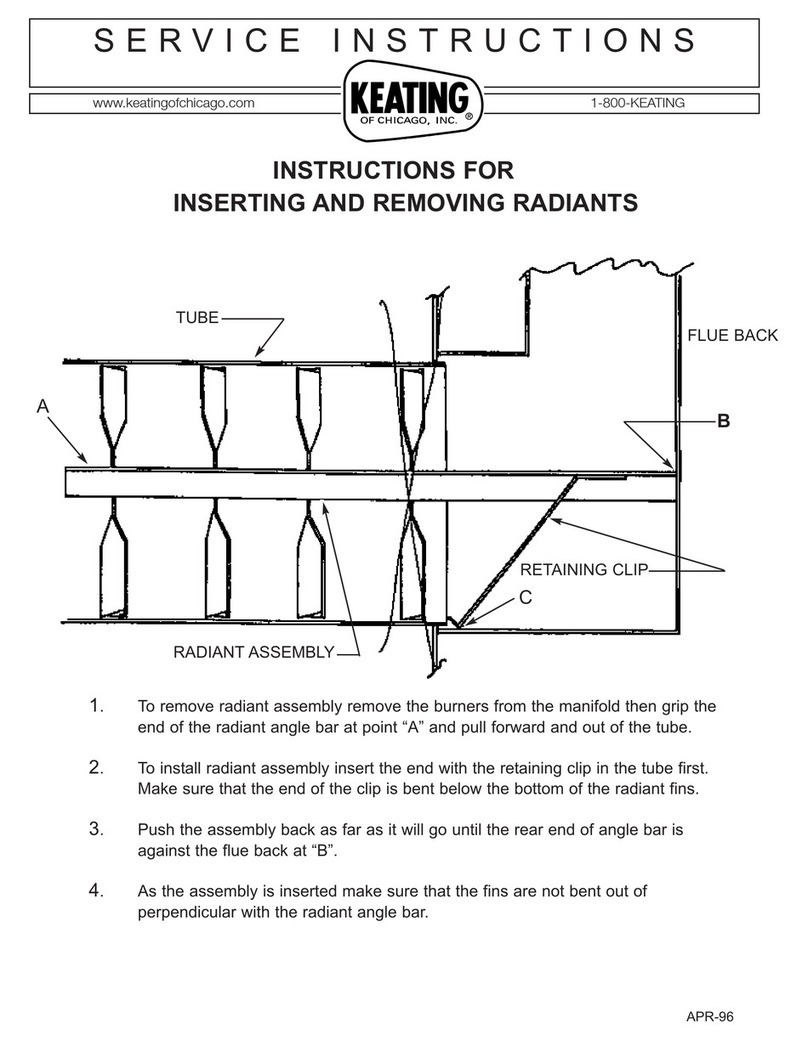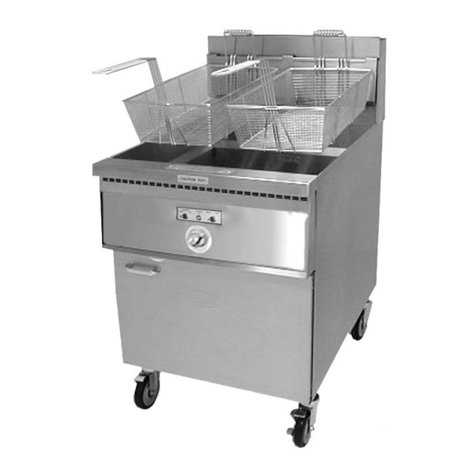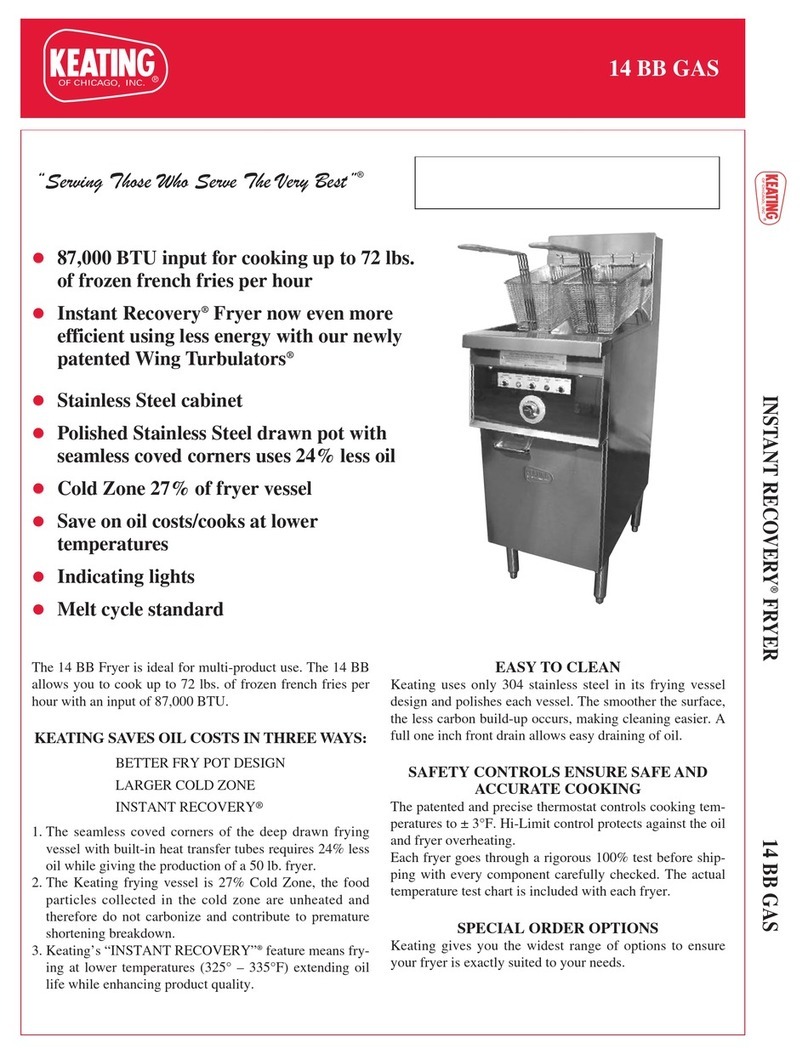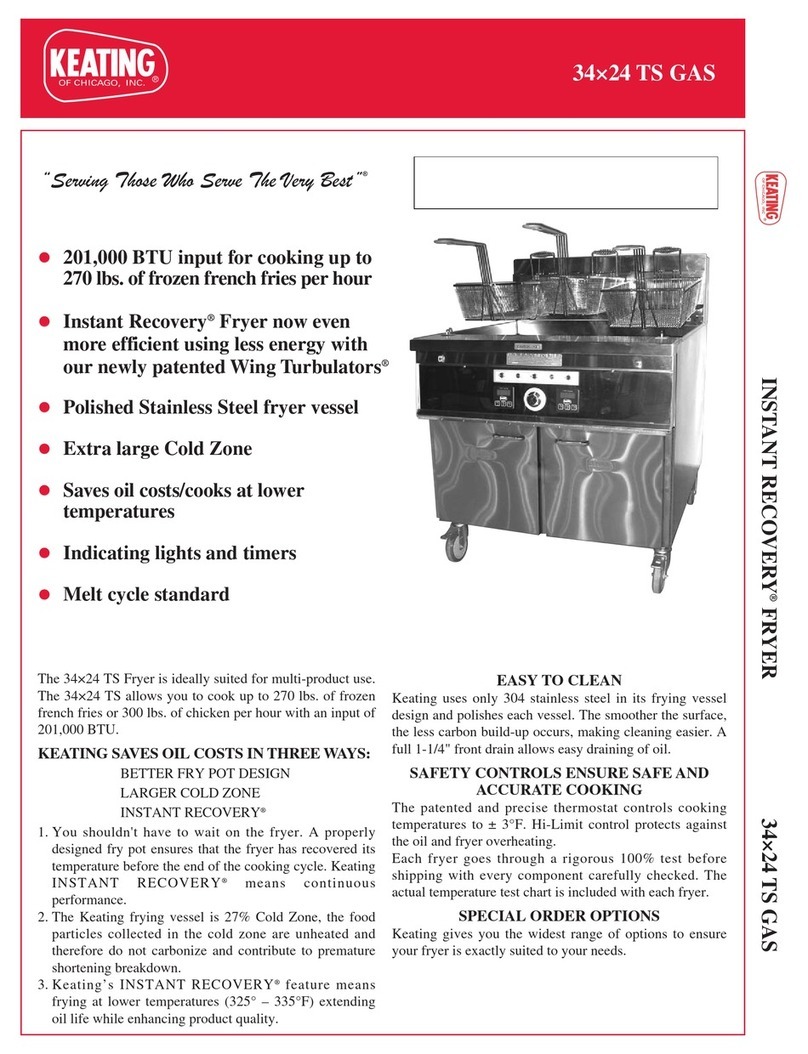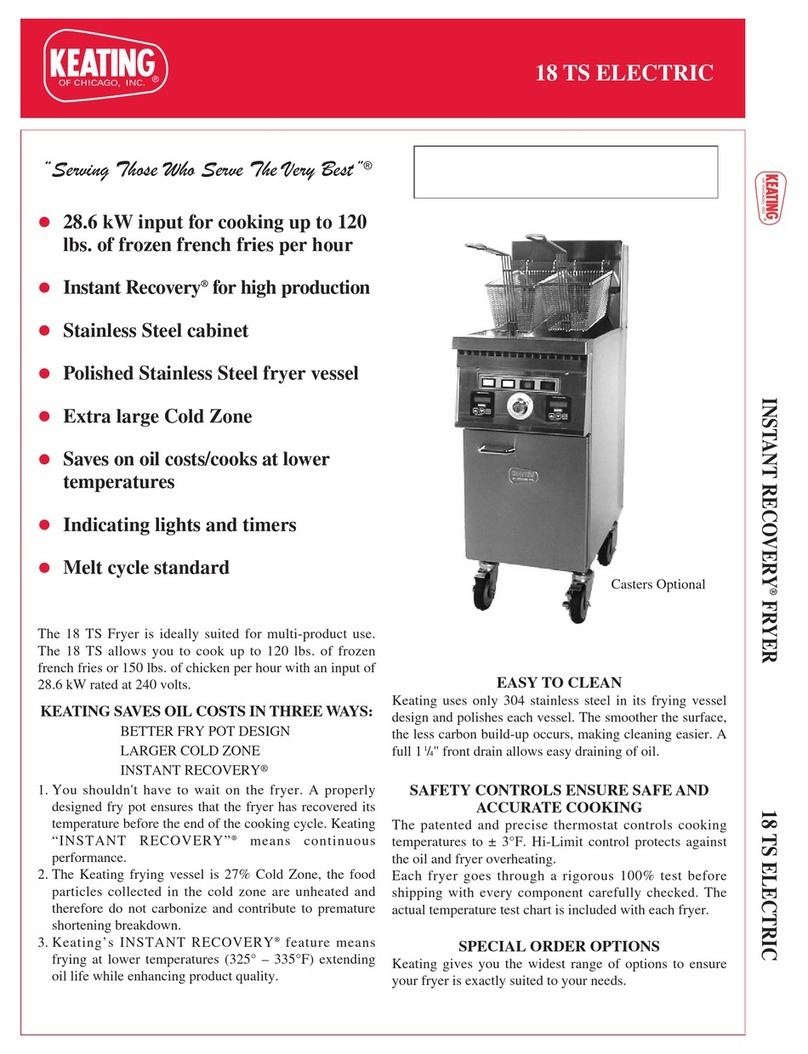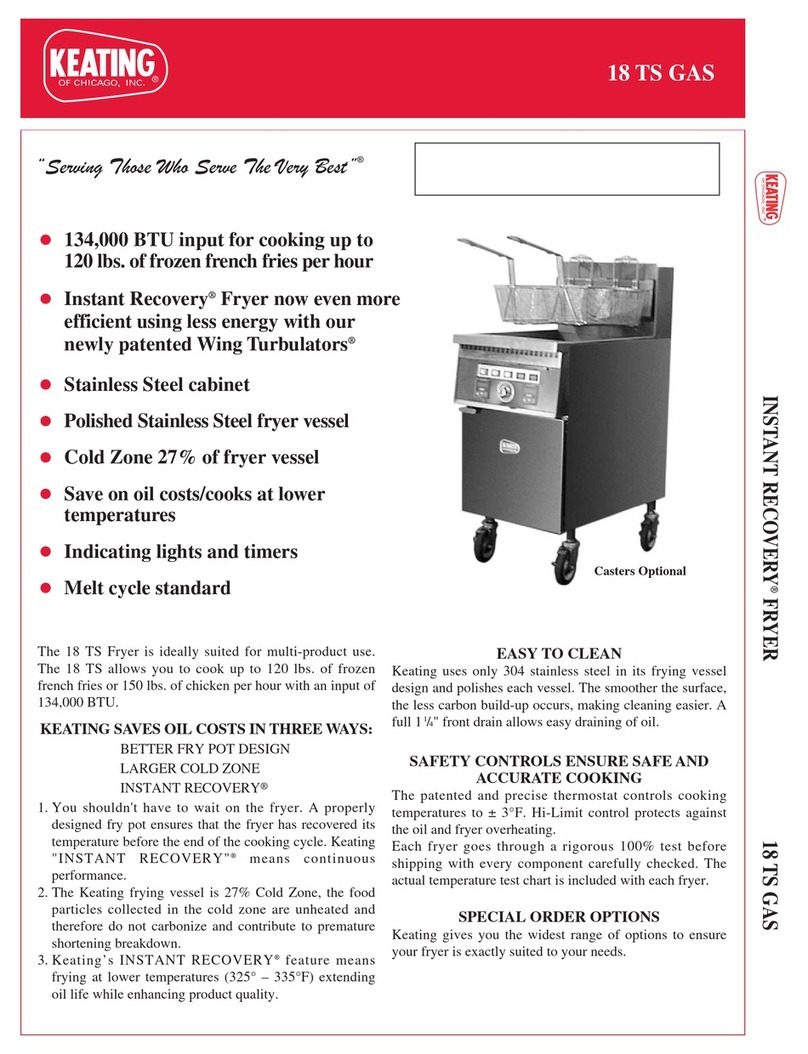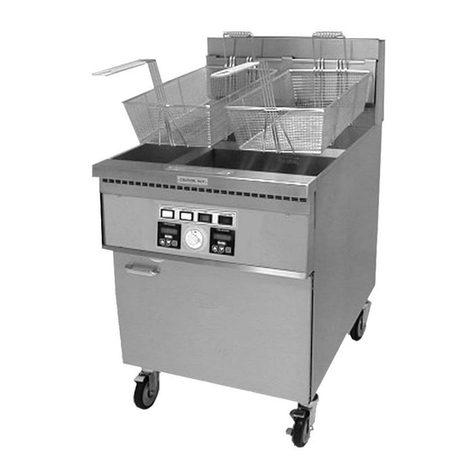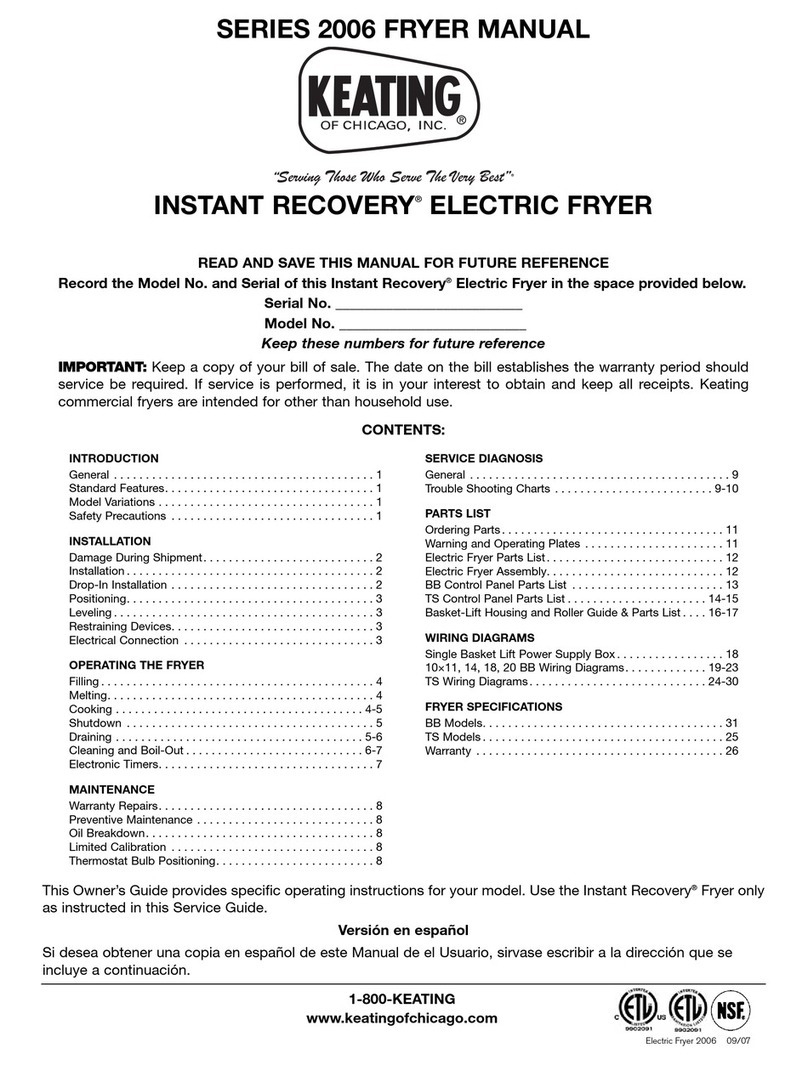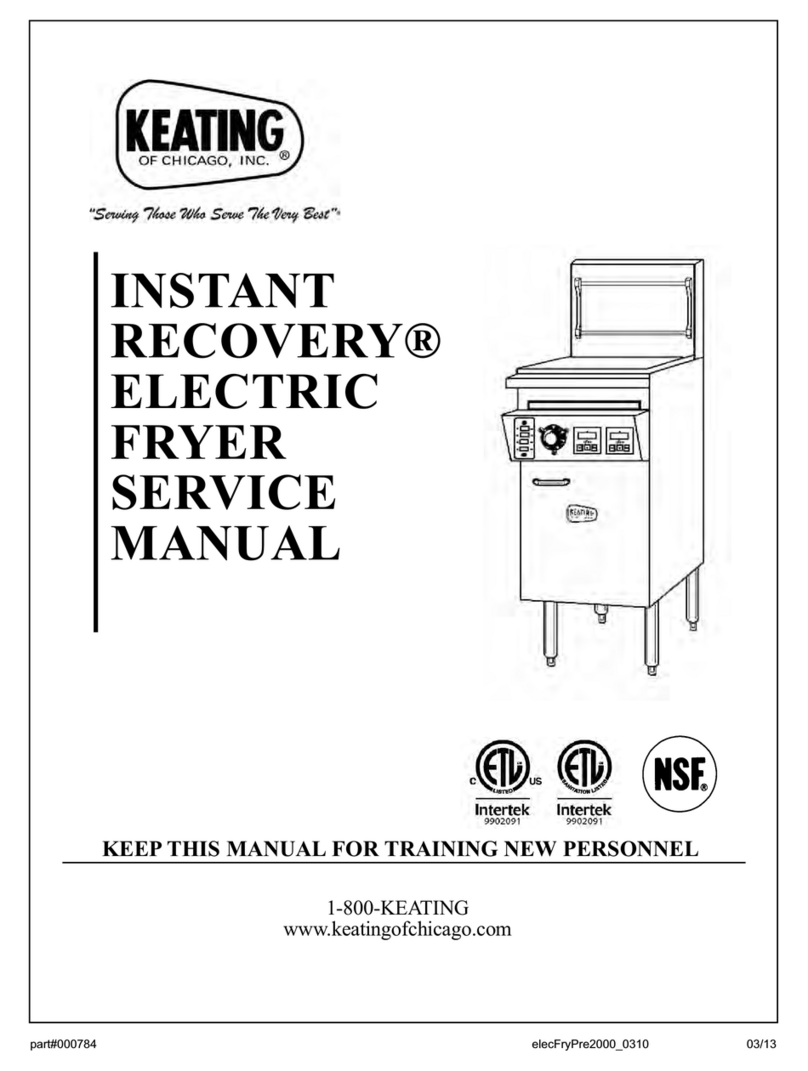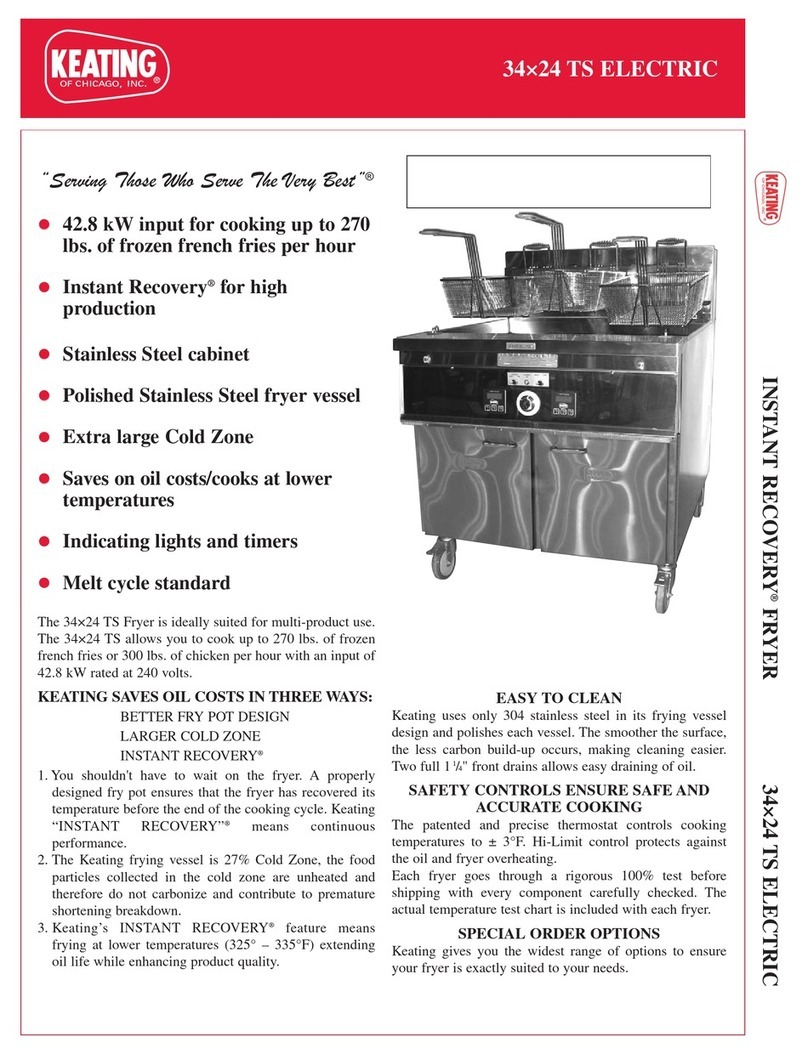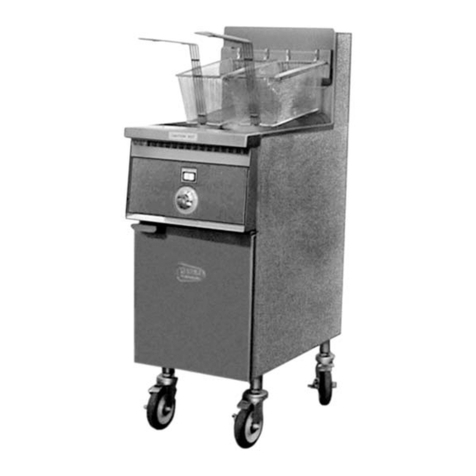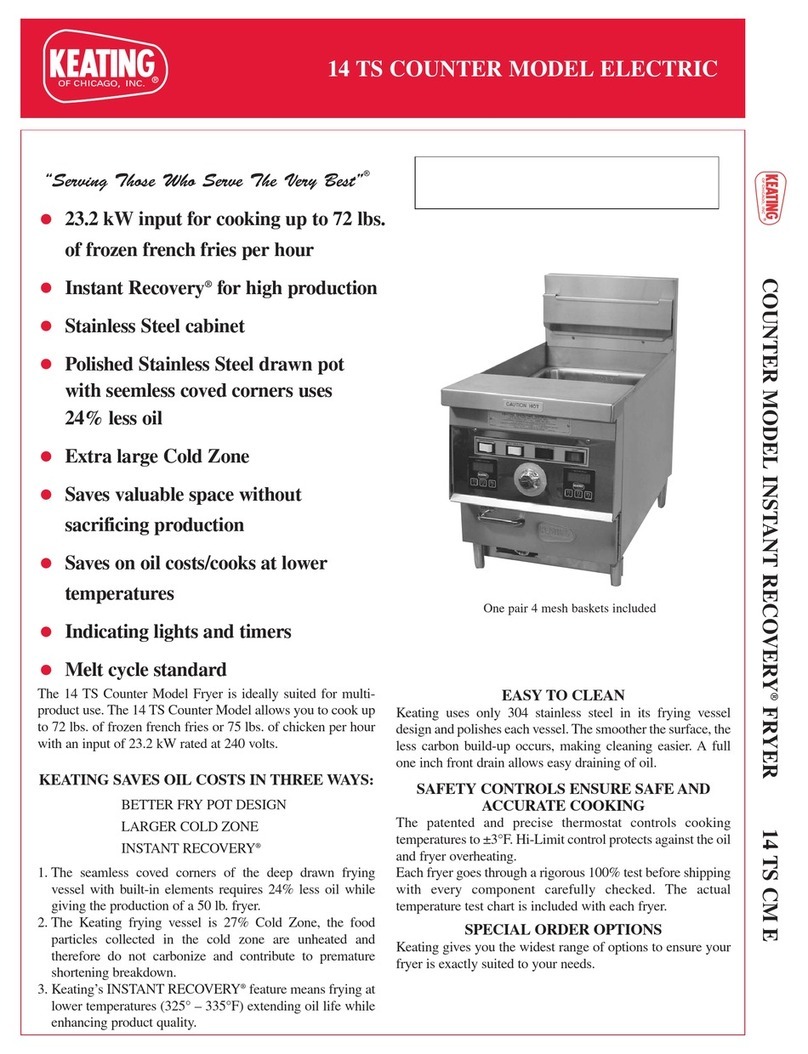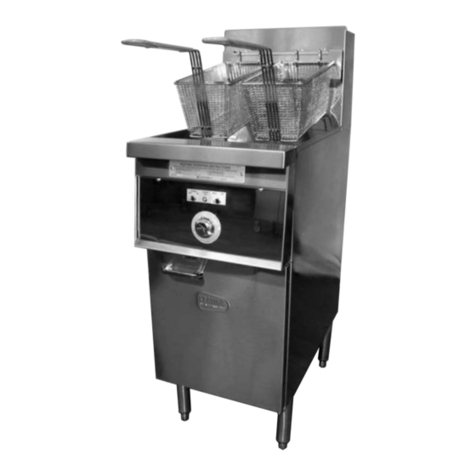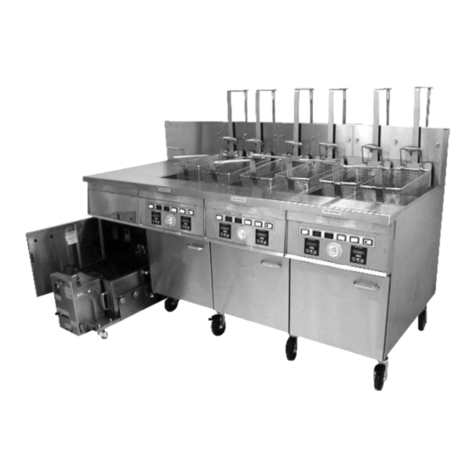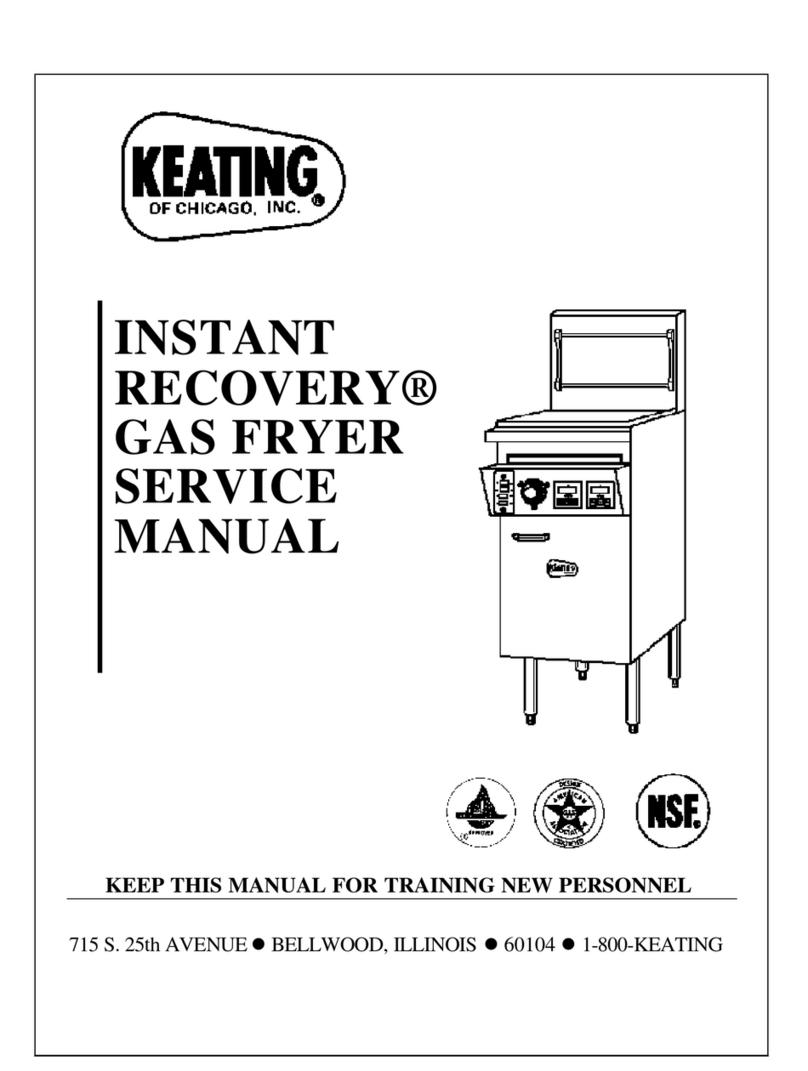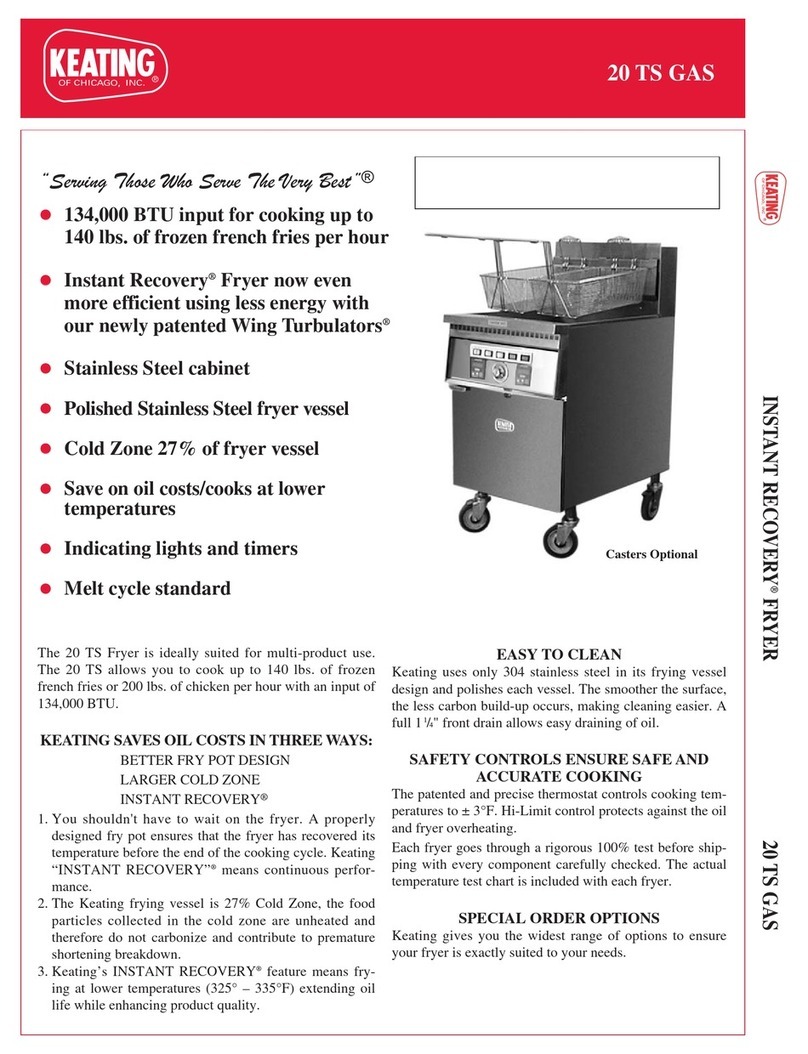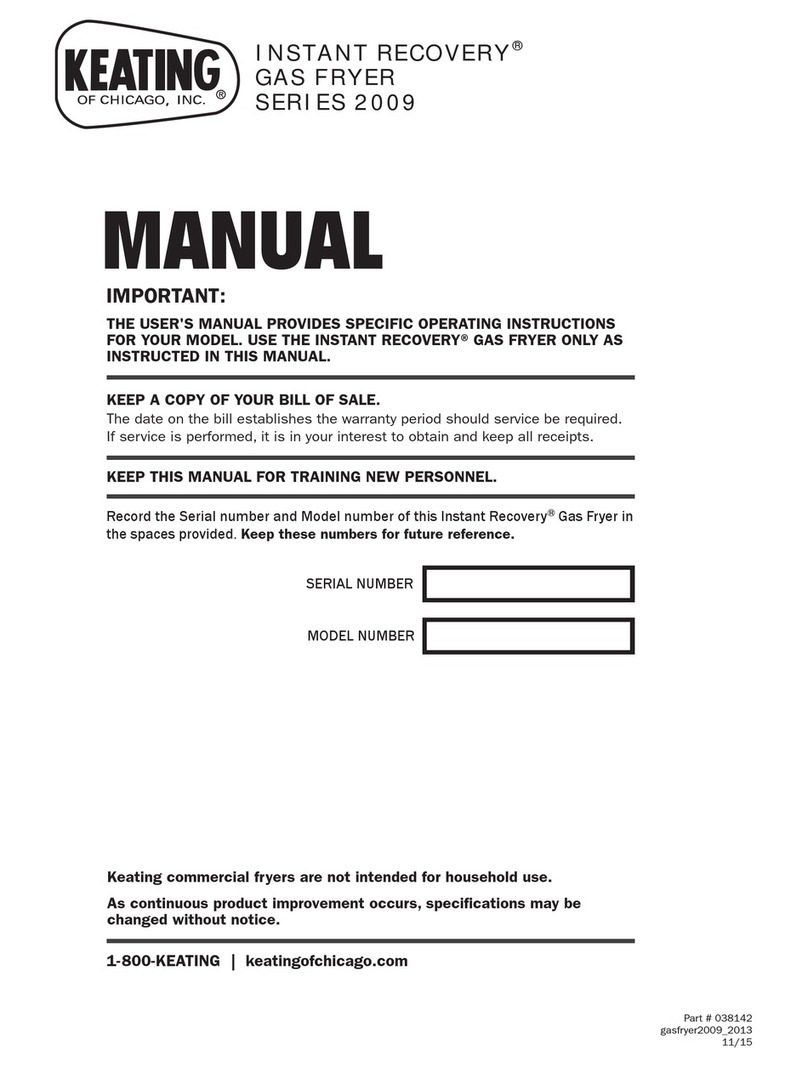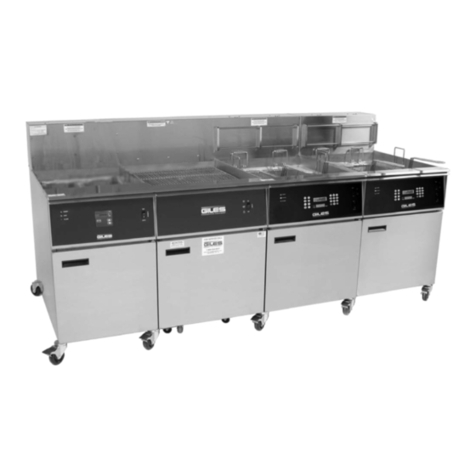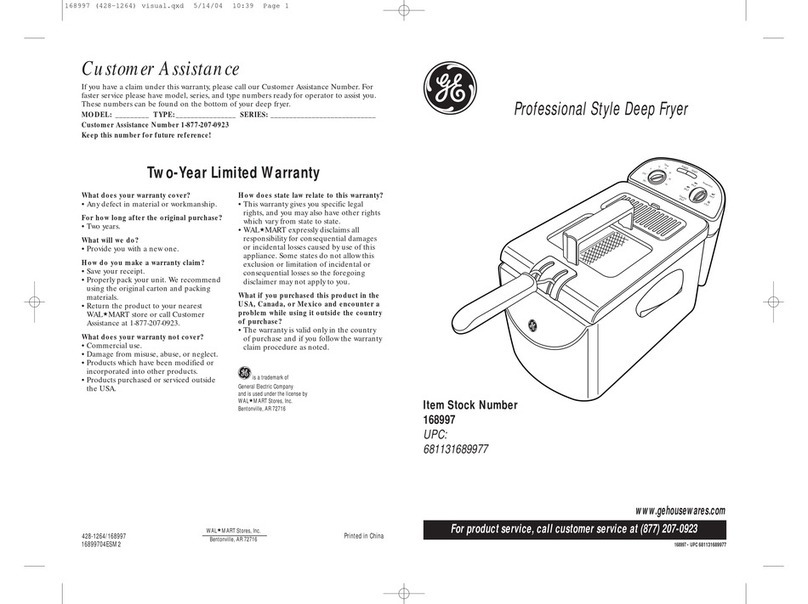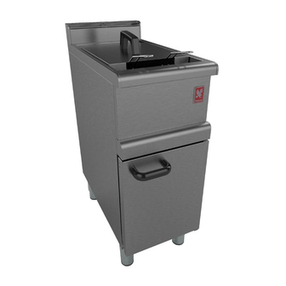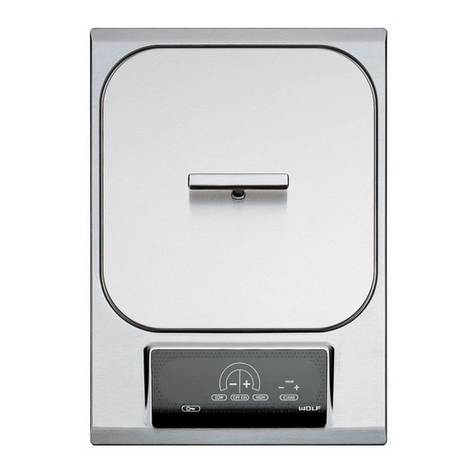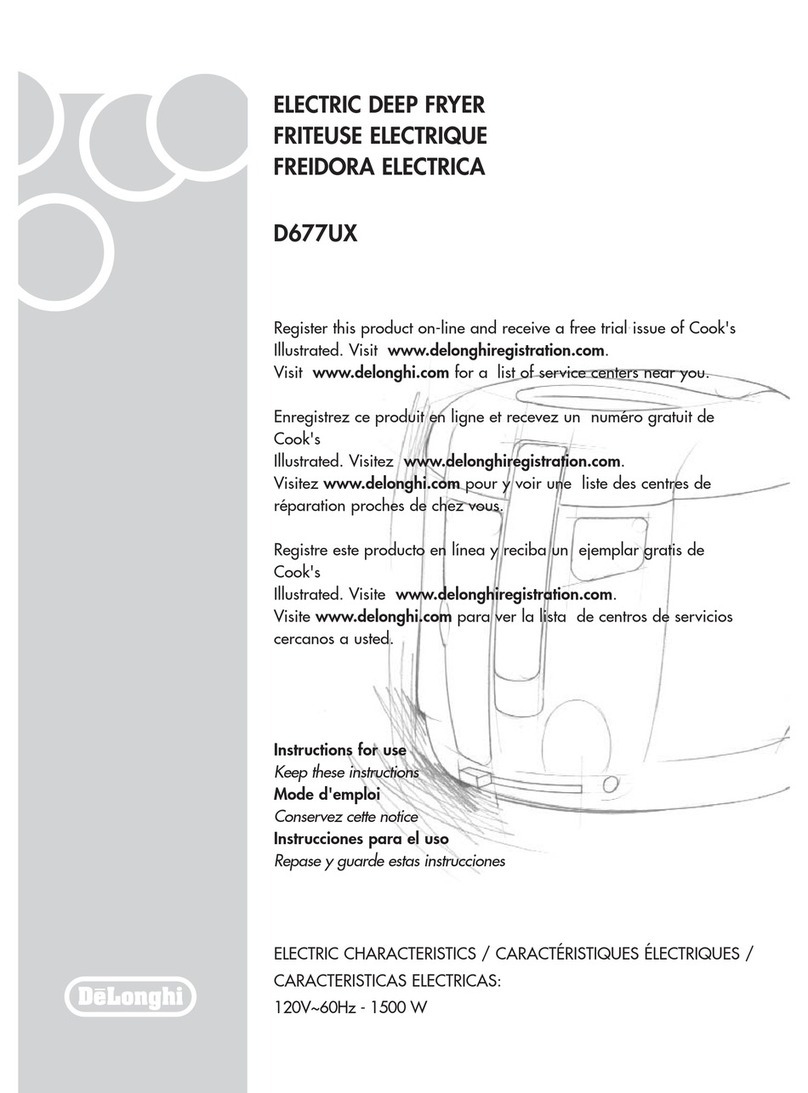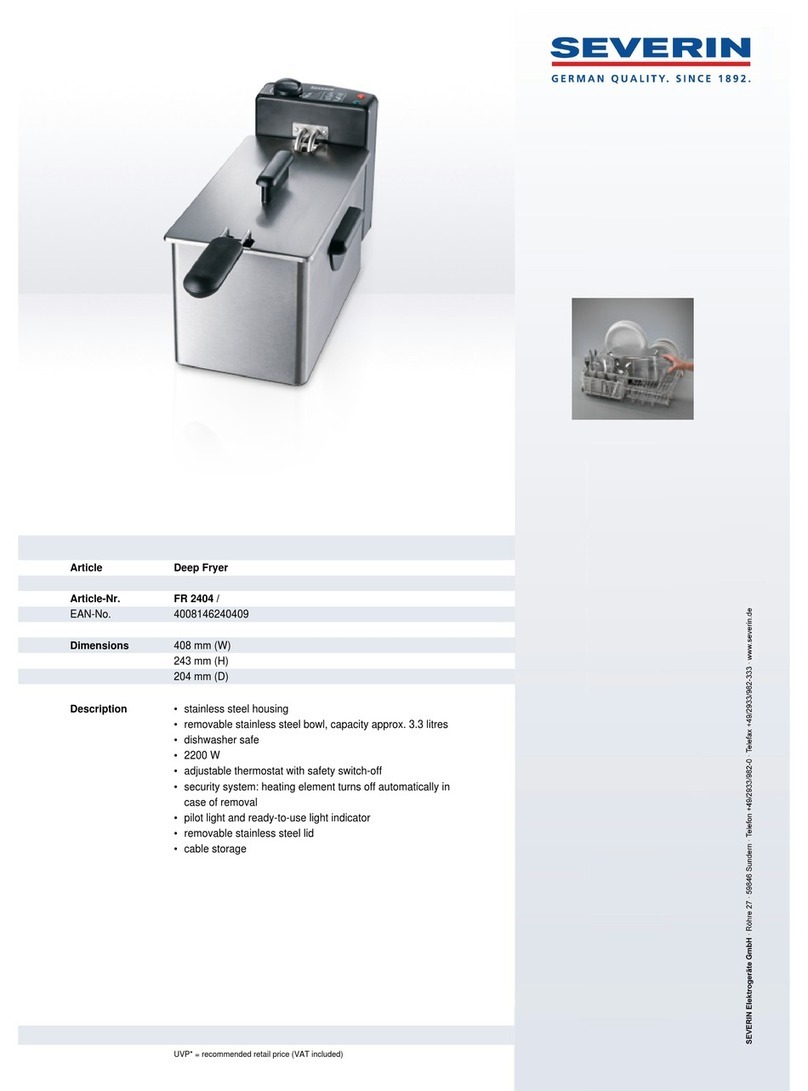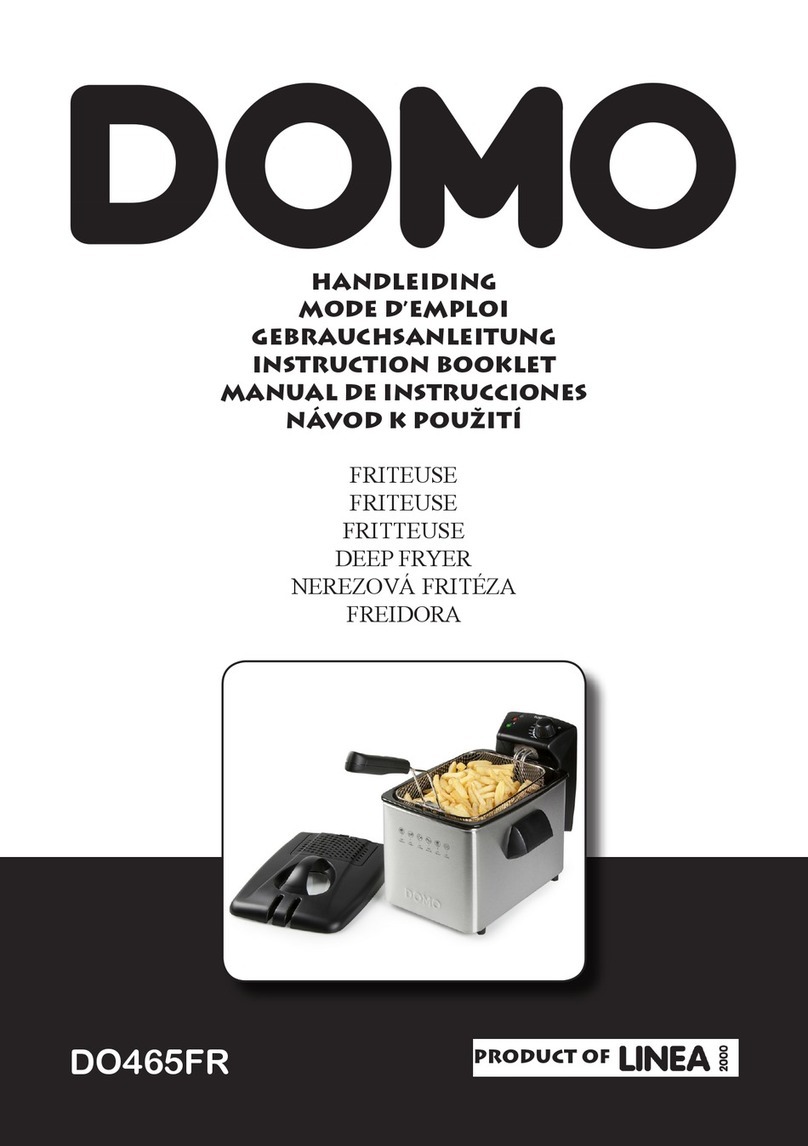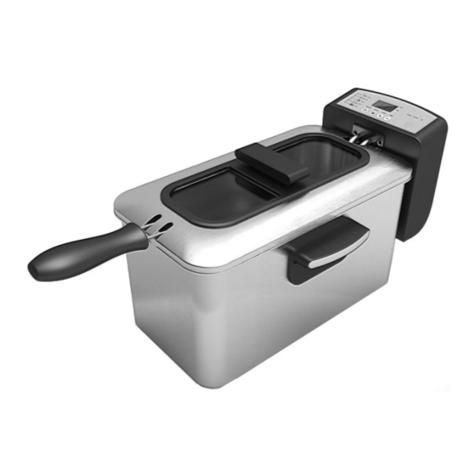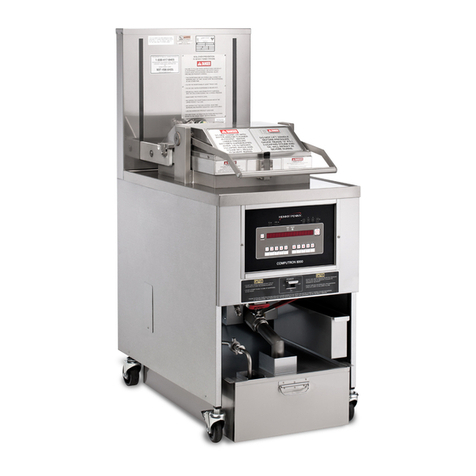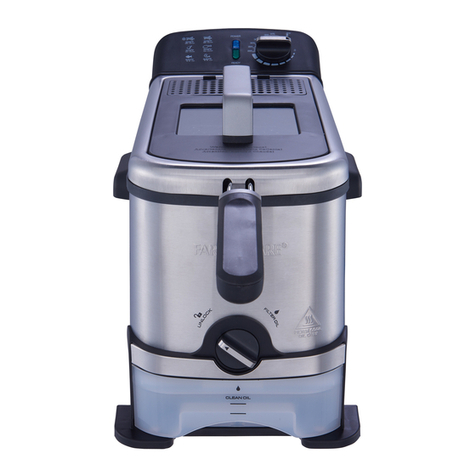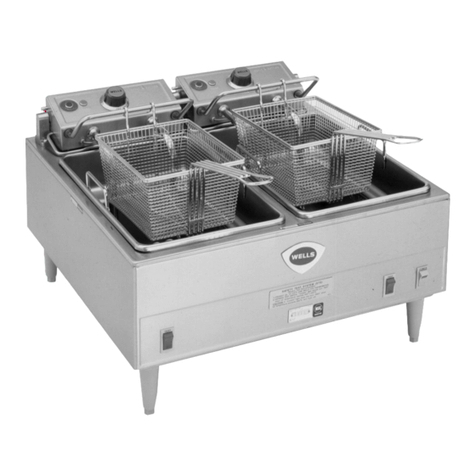
2
lYour ventilation hood, when installed, must conform
to the current ANSI/NFPA 96 standard (latest
edition).
lNo frame or restriction shall be constructed around
the fryer that will restrict air movement into the
fryer’s combustion area (through the grease filter
underneath the fryer) or prevent proper ventilation.
lKeating fryers are designed to operate on the gas
fuel specified on the serial plate and must not be
operated with another gas fuel. They cannot be
converted to another gas fuel by turning or engaging
a switch.
FOR YOUR SAFETY: Do not store or use gasoline
or other flammable vapors and liquids in the
vicinity of this or any appliance.
You will post, in a prominent location, instructions to be
followed in the event the user smells gas. This
information shall be obtained from your local gas
supplier. You may use the yellow stick-on label
temporarily until you receive the data from your local gas
supplier.
IMPORTANT: In the event a gas odor is detected,
shut down unit at main shut-off valve and contact
the local gas company or gas supplier for
emergency service.
lSuitable for installation on combustible floors.
lYou must maintain this appliance free and clear from
combustibles.
lYou must maintain the following minimum
clearances from combustible and noncombustible
construction:
lYou must install this appliance at least 16 inches
away from any open flame.
lAdequate clearance for servicing and proper
operation must be maintained. Your fryer is designed
to be serviced from the front.
lKeating commercial fryers are intended for other
than household use.
lALWAYS instruct new employees on proper fryer
operation.
lA fryer should be operated ONLY by properly trained
personnel.
lALWAYS turn fryer off each night.
lALWAYS disconnect fuel source before servicing.
lNEVER leave a fryer unattended during operation.
lNEVER move a fryer when full of hot oil.
lNEVER introduce objects or liquids into fryer, while
operational, which are not designed or made for
cooking.
lTHIS FRYER MAY NOT BE ALTERED, MODIFIED
OR CHANGED IN ANY WAY.
The State of California enacted the California Safe
drinking water and Toxic Enforcement Act of 1986,
(Prop. 65), which “prohibits any person in the course of
doing business from knowingly and intentionally
exposing any individual to a chemical known to the
State of California to cause cancer or reproductive
toxicity without first giving clear and reasonable
warning to such individuals.” The Governor’s Scientific
Advisory Panel added carbon monoxide to the list of
hazardous chemicals known to cause reproductive
harm.
In order to establish full compliance with Proposition
65, we attached a yellow warning label to each gas
fired appliance manufactured by Keating of Chicago,
Inc.
Carbon monoxide would not be present in
concentrations that would pose a “significant risk” to
the consumer when the equipment is installed,
operated and maintained as follows:
lInstalled in accordance with all local codes, or in the
absence of local codes, with the current National
Fuel Gas Code ANSI Z223.1/NFPA54 (latest
edition).
lInstalled under a properly designed operating
exhaust hood.
lConnected to the type of gas for which the appliance
is manufactured.
lIn-line pressure regulator, not supplied by Keating,
must be installed outside the appliance.
lThe appliance is adjusted for the manifold pressure
marked on the serial plate.
lAdequate air supply to the appliance.
lThe equipment is operated in the manner intended
using the proper utensils.
lKeep the equipment clean and have it checked
periodically.
lBurner air adjustments, mechanical maintenance
and repairs must be performed by qualified service
personnel.
If the equipment is not installed, operated and
maintained in accordance with the above,
concentrations of carbon monoxide in excess of the
established limits could be present in the kitchen
environment.
Clearances
Combustible Noncombustible
Construction Construction
Back 6" 0"
Right Side 6" 0"
Left Side 6" 0"
